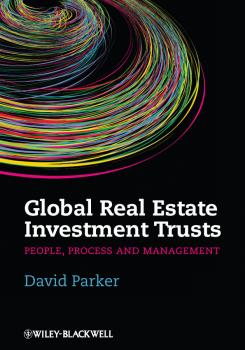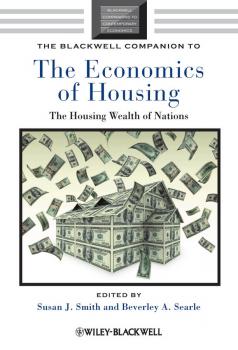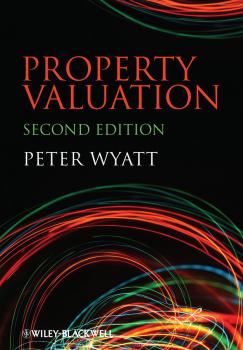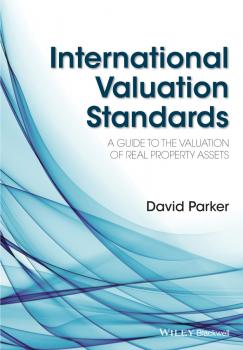Недвижимость
Различные книги в жанре НедвижимостьНедвижимость в России: построй, продай, заработай!
Все говорят о кризисе рынка недвижимости в России. Так ли это? Как зарабатывать на недвижимости? Как продавать и что покупать? В книге приведены новейшая статистика и опыт лидеров отрасли, представлены 200 методик и технологий по увеличению прибыли, которые помогут участнику рынка незамедлительно получить финансовый результат и перестать терять деньги. Она не о том, как продавать дома из бетона или кирпича, а о построении грамотного и высокодоходного бизнеса. О возможностях и их грамотном использовании, наладке бизнес-машины, которая «печатает» вам деньги. Рынок недвижимости из каменного века шагает в высокотехнологичную эру, и для этого перехода уже собраны необходимые инструменты. Только вам решать – работать как раньше или получить больше денег от вашего бизнеса. Книга будет полезна: • собственникам компаний, • маркетологам, • коммерческим директорам и всем тем, кто хочет грамотно и с минимальными затратами выстроить «денежную машину» из собственного бизнеса.
Бизнес для бедных
Книга от автора, который занимался предпринимательством в малом бизнесе с претензией на высокий уровень «мастерства», не имея ни опыта, ни денег, ни знакомств. Охвачены такие сферы как: юридические, консалтинговые и образовательные услуги, сертификация, агентство недвижимости, частные инвестиции и др. Речь также идет о построении дополнительных офисов, взаимоотношениях с налогами, активных и пассивных продажах, разделении труда, работе с госзаказами, делегировании полномочий, построении отделов. Автор не делает из себя "бизнес-гуру", честно пишет не только об успехах, но и неудачах.
Global Real Estate Investment Trusts. People, Process and Management
As real estate investment trusts continue to grow exponentially in Asia and Europe – being already well established in the USA and Australasia – a comprehensive guide to the issues involved in REIT property investment decision making is badly needed. This book draws together the most recent developments in REIT management from academic research and professional practice. It is based on current, original academic research, including structured interviews with the managers of a wide range of different types of REITs as well as the research and publications of others, together with the author's 25 years experience in REIT management. It provides a theoretically robust and practically relevant up to date guide to the property investment decision making process for REITs. Presenting new insights, the author breaks the REIT property investment decision making process down into three phases comprising six stages with 30 sequential steps. Each chapter focuses on one stage of the property investment decision making process and introduces the key people in the REIT management team relevant to the activities in that chapter. The theory and principles are considered and illustrated by application to Super REIT, a $15bn diversified REIT. Global Real Estate Investment Trusts: People, Process and Management fuses not only how REITs should undertake property investment decision making – based on how it is undertaken and the underlying property theory, capital market theory and finance theory – but also why each part of the decision making process is important. This book provides the first sole-authored scholarly work specifically on REITs as a business enterprise and REIT property investment decision making as an holistic and cyclical process. The focus is on principles, making it relevant in each of the four major REIT markets around the world: USA, Europe, Asia and Australasia. An essential book for REIT managers and all those practising professionals involved in the REIT industry – including property practitioners, researchers, lawyers, accountants, bankers and directors around the world.
The Blackwell Companion to the Economics of Housing. The Housing Wealth of Nations
The Blackwell Companion to the Economics of Housing will help students and professionals alike to explore key elements of the housing economy: home prices, housing wealth, mortgage debt, and financial risk. Features 24 original essays, including an editorial introduction and three section overviews Includes 39 world-class authors from a mix of educational and financial organizations in the UK, Europe, Australia, and North America Broadly-based, scholarly, and accessible, serving students and professionals who wish to understand how today’s housing economy works Profiles the role and relevance of housing wealth; the mismanagement of mortgage debt; and the pitfalls and potential of hedging housing risk Key topics include: the housing price bubble and crash; the subprime mortgage crisis in the US and its aftermath; the links between housing wealth, the macroeconomy, and the welfare of home-occupiers; the mitigation of credit and housing investment risks Specific case studies help to illustrate concepts, along with new data sets and analyses to illustrate empirical points
Making Housing more Affordable. The role of intermediate tenures
The movement away from traditional rented approaches to meeting the housing needs of those on modest incomes has taken on new momentum in the latest economic cycle. This book answers some of the questions around affordable housing and low cost home ownership, and whether these intermediate tenures have the potential to play a longer term role in achieving sustainable housing markets. The editors clarify the principles on which the development of affordable housing and intermediate tenures has been based; analyse the policy instruments used to implement these ideas; and make a preliminary assessment of their longer tem value to households and governments alike. Making Housing More Affordable: the role of intermediate tenures brings together an evidence base for researchers and policy makers as they assess past experience and work to understand future options. The book draws mainly on experience of the intermediate housing market in England but also on examples of policies that have been implemented across the world. It clarifies both the challenges and the achievements of governments in providing a well operating intermediate market that can help meet the fundamental goal of ‘a decent home for every household at a price within their means’. The first section outlines the principles and practice of intermediate housing and examines the instruments and mechanisms by which it has been provided internationally. The next section estimates who might benefit from being in intermediate housing and projects the take-up of different products in the future. Section III examines the supply side and Section IV introduces some case studies of who gets what. The final section looks at how effectively the intermediate market operates over the economic cycle.
Property Valuation
This new edition of the ‘all in one' textbook for the postgraduate study of valuation on real estate courses retains its focus on the valuation and appraisal of commercial and industrial property across investment, development and occupier markets. It is structured from the client perspective and covers single-asset pricing, risk and return issues. The structure of the book has been substantially revised. Part A introduces the key microeconomic principles, focussing on land as a resource, production functions, supply and demand and price determination. The locational aspect of real estate is also introduced. Macroeconomic considerations are categorised by the main market sectors (and their function); the market for land (development), for space (occupation) and for money (investment). The economic context is set and the author then explains why property valuations are required and discusses the main determinants of value and how they might be identified. The mathematics required to financially quantify value determinants are also introduced. Part B of the book describes the methods of valuation; Part C applies these methods to the valuation of a range of property types for a wide variety of purposes; and Part D covers investment and development appraisal. The author introduces valuation activities from a broad economic perspective, setting valuation in its business finance context and combining its academic and practical roots. Changes in this second edition include: less daunting economics expanded companion website with PowerPoint slides for lecturers, self-test Questions & Answers for students: see www.wiley.com/go/wyattpropertyvaluation up-to-date case studies and sample valuations reference to the newly-published Red Book (the valuer’s bible) Property Valuation with its user-friendly format, using tried-and-tested teaching and learning devices and a clear writing style, remains the core text for students on real estate, estate management and land economy degree courses, as well as for fast-track conversion courses for non-cognate graduates.
Office Markets and Public Policy
This is the first book that looks at how offices and office markets in cities have changed over the last 30 years. It analyses the long-term trends and processes within office markets, and the interaction with the spatial economy and the planning of cities. It draws on examples around the world, and looking forward at the future consequences of information communication technologies and the sustainability agenda, it sets out the challenges that now face investors. The traditional business centres of cities are losing their dominance to the brash new centres of the 1980s and 1990s, as the concept of the central business district becomes more diffuse. Edge cities, business space and office parks have entered the vocabulary as offices have also decentralised. The nature and pace of changes to office markets set within evolving spatial structures of cities has had implications for tenants and led to a demand for shorter leases. The consequence is a rethink of the traditional perception of property investment as a secure long term investment, and this is reflected in reduced investment holding periods by financial institutions. Office Markets & Public Policy analyses these processes and policy issues from an international perspective and covers: A descriptive and theoretical base encompassing an historical context, a review of the fundamentals of the demand for and supply of the office market and offices as an investment. Embedded within this section is a perspective on underlying forces particularly the influence of technological change. A synthesis of our understanding of the spatial structure and dynamics of local office markets at the city level. An assessment of the goals and influence of planning policies, and the evaluation of policies designed toward the long term sustainability of cities as services centres. This goes beyond standard real estate and urban economics books by assessing the changing shape of urban office markets within a spatial theoretical and policy context. It will be a useful advanced text for honours and postgraduate students of land economy; land management; property and real estate; urban planning; and urban studies. It will also be of interest to researchers, property professionals, policy-makers and planning practitioners.
Building Cycles. Growth and Instability
The global economic crisis of 2008 was precipitated by a housing market crash, thus highlighting the destabilizing influence of the property cycle upon the wider economy. This timely book by a world authority explores why cycles occur and how they affect the behaviour of real estate markets. The central argument put forward is that growth and instability are inextricably linked, and that building investment acts both as a key driver of growth and as the source of the most volatile cyclical fluctuations in an economy. The role of building cycles in both economic growth and urban development is explored through a theoretical review and a comparative historical analysis of UK and US national data stretching back to the start of the nineteenth century, together with a case study of the development of London since the start of the eighteenth century. A simulation model of the building cycle is presented and tested using data for the City of London office market. The analysis is then broadened to examine the operation of property cycles in global investment markets during the post-war period, focussing on their contribution to the diffusion of innovation, the accumulation of wealth and the propagation of market instability. Building Cycles: growth & instability concludes by synthesizing the main themes into a theoretical framework, which can guide our understanding of the operation and impact of building cycles on the modern economy. Postgraduate students on courses in property and in urban development as well as professional property researchers, urban economists and planners will find this a stimulating read – demanding but accessible.
International Valuation Standards. A Guide to the Valuation of Real Property Assets
International Valuation Standards: a guide to the valuation of real property assets is an essential road map to using the new International Valuation Standards in everyday practice for real estate assets, explains their content, application and operation. It shows how to value assets including property, plant and equipment and is written in an explanatory style using commonly understood business English with as little jargon as possible. It takes a thematic format, focusing on the application of IVSs to investment property and owner-occupied property with the author addressing valuation instruction, operation and reporting under IVSs.
Frank McKinney's Maverick Approach to Real Estate Success. How You can Go From a $50,000 Fixer-Upper to a $100 Million Mansion
Praise for Frank McKinney «My neighbor, Frank McKinney, is certainly a maverick and a spiritually grounded young man. The oceanfront homes he builds here in Florida are magnificent and unique. More important, Frank's life and the contributions he makes to his community and the world illustrate how a successful businessman can do well while doing good. The principles in Frank McKinney's Maverick Approach to Real Estate Success represent a road map of his achievements–a proven strategy for succeeding not just in real estate, but also in the business of life.» –Rich DeVos, cofounder of Amway, owner of the Orlando Magic «If you're ready to make big profits in real estate, then read, absorb, and use the brilliance of Frank McKinney.» –Mark Victor Hansen, coauthor of The One Minute Millionaire «Frank McKinney's book is an excellent how-to guide to earning real estate profits by using McKinney's maverick formulas to find undervalued real estate with profit potential. McKinney is different. This isn't another how-to-get-rich-in-real-estate book. Instead, it is the lively success story of a real estate maverick. McKinney reveals his simple strategies, with intriguing personal profit examples that explain how his repeatable techniques work over and over.» –Robert J. Bruss, syndicated real estate columnist «If Hollywood were casting the role of a maverick who started with very little and went from a $50,000 fixer-upper to a $100 million mansion, they would choose Frank McKinney. Frank McKinney's Maverick Approach to Real Estate Success represents his approach to life. He decided to apply that approach to real estate and look what happened!» –Kendra Todd, winner of The Apprentice









